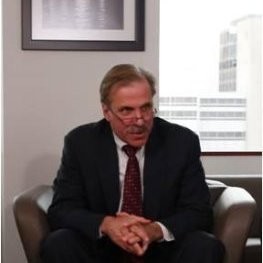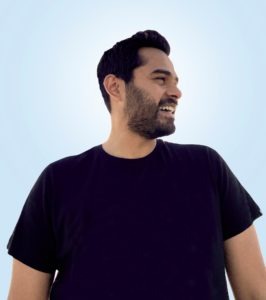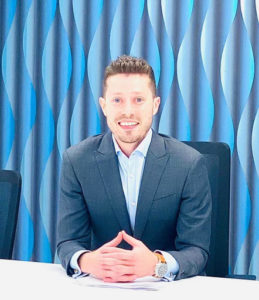Not-for-Profit Report
| BY MICHAEL PELTIER, ASSISTANT EDITOR |
| Serving an ace with restorative volleyball |
| When residents at Sunnyside Nursing Home in Sarasota, Florida, became bored playing basketball as a restorative activity-they tossed a ball into a milk crate-they asked staff if they could do something else. Staff were challenged to develop a program that would improve residents’ function yet also be enjoyable. They initiated a new activity-restorative volleyball-using only a beach ball, a net, and an open space, but it has had a “smashing” effect on residents, as well as staff. Winning feels good at any age. A resident celebrates a score. Sunnyside Nursing Home, a 60-bed facility that opened in 1968, is part of Sunnyside Village Retirement Community. Located on 33 acres in Sarasota County, the facility is sponsored by seven Mennonite churches. Out of 700 Florida nursing homes, Sunnyside is one of only 15 to be awarded the Gold Seal Award by the Governor’s Panel on Excellence in Long-Term Care, and the organization received AAHSA’s 2005 Excellence in the Workplace Award. The staff at Sunnyside are dedicated to their residents. CNAs Kathy Martineau, Kathy “KC” Cole, and Hattie Wyatt have been instrumental in making restorative volleyball a beneficial and fun game for residents, staff, and families. Martineau has been with Sunnyside for 26 years, Cole for 20 years, and Wyatt for 7 years. Diane Marcello is in her eighth year as administrator, and she was previously the rehab director for four years. Two years ago, Sunnyside was tasked with developing a new restorative program. Basketball had been fun for a while, but it didn’t have a lasting appeal. “Hattie and the restorative nurse came up with the idea that if they put a four-foot net up and they got some beach balls, the residents would be able to get some arm extension to bat the ball over the net, and have a good time,” Marcello says. To play restorative volleyball, all players must be seated. “Some residents are in wheelchairs, and the ones who do walk sit in chairs. No one’s allowed to stand up while they play-even the staff have to sit in chairs,” Cole explains. And while players aren’t allowed to use their legs, they don’t have to use their arms, either. “We have one resident who uses his head to get the ball over the net at times,” she adds. Staff have been known to be lenient with the rules, which they sometimes make up as they play. “We have one resident who likes to use her feet every now and then, and any way she can get the ball over the net she will,” Marcello says. “So we close our eyes to that.” Certain rules, though, are never broken. “Residents really do earn their points,” Wyatt notes. “We have beaten them, and they have beaten us on many occasions. They fight hard for their wins.” Restorative volleyball uses the same scoring system as traditional volleyball, but the number of participants can vary-the game can accommodate as many as 14 people playing on one team at a time. Players compete in two arenas: a TV room and a large, multipurpose room that doubles as a chapel and a meeting room. Daily practices and restorative programs are held in the TV room after clearing out chairs, and games against staff or family members are played in the larger venue. The residents’ team name, the Golden Oldies, is emblazoned on shirts they wear during matches. The Golden Oldies have proven to be a formidable opponent to the Sunnyside Staffers, but no matter who wins, the competition remains friendly. “The staff have fun and the residents have fun-they love to play volleyball,” Martineau says. And residents who don’t play contribute by cheering on the Golden Oldies. Last year, residents participated in the Senior Olympics for the first time. That competition has inspired a possible challenge: a match against another facility that plays a version of restorative volleyball. “Because it is such a thrill when they play against the staff, I think it would be even more thrilling if they could play against another nursing home,” Marcello suggests. Examples of restorative volleyball’s benefits abound. “You’d be amazed when you have exercise class and you tell residents to ‘raise your arms’ how far they go up. But when it comes to volleyball, their arms are all the way up in the air,” Martineau says. Restorative volleyball has also helped foster communication among residents, a healthy competitive spirit, and a desire to engage in exercise more than four days a week. “It has brought a lot of them out of their shells. The camaraderie and the morale have been lifted,” Wyatt notes. Once, a resident’s daughter came to take her father out but, with an important game coming up, he had other plans. “He said he was not leaving the facility because there was a tournament against the staff coming up. If she wanted to see him, she was just going to have to stay and watch while he practiced,” Marcello says. Another resident who didn’t walk much started walking more because of restorative volleyball. “He felt it was necessary to win the game against the staff, so he exercised more,” Wyatt explains. She likens restorative volleyball’s effect on residents to “Kick the Can,” an episode of The Twilight Zone in which older adults transform into children as they play the game kick the can. The enthusiasm that the program has created isn’t limited to residents. “All the CNAs participate,” Wyatt says. “Second shift will stop for a few moments and play or cheer. It’s brought a lot of CNAs closer, and we’re on a more intimate level with the residents. We become their friends.” Along with CNAs, dietary, housekeeping, office, and rehab staff participate in restorative volleyball, and the organization’s executive director even comes to play. Marcello adds: “It’s hard to think that something as simple as volleyball with a beach ball could unify staff, but it really does.” Marcello credits the program’s success to Martineau, Cole, and Wyatt. “These three women are absolutely amazing with these residents,” she says. “They give their heart and soul to the residents on a day-to-day basis and encourage them and get them excited. It’s just a beautiful thing to see.” For more information, phone (941) 371-2729 or visit www.sunnysidevillage.org. To send your comments to the author and editors, please e-mail 2peltier1006@nursinghomesmagazine.com . |
| A collaboration of the American Association of Homes and Services for the Aging and Nursing Homes/Long Term Care Management Not-for-Profit Report, appearing in every issue of Nursing Homes magazine, addresses issues of particular interest to long-term care’s not-for-profit sector. It provides nonprofit aging service providers with an additional information resource. Topics have been identified in collaboration with the American Association of Homes and Services for the Aging. Nursing Homes welcomes comments and suggestions for future coverage. |
| BY DANIEL REINGOLD, MSW, JD |
| Sheltering the victims of elder abuse: A new role for long-term care facilities |
| T.M., a 61-year-old Hispanic widow, was living in her one-bedroom apartment in the Bronx. She had been a victim of child abuse by her father, and she was physically, verbally, and sexually abused by two husbands. She had virtually no community contact. Last year, her unemployed, drug-addicted adult son moved in with her and was physically, emotionally, and financially abusing her. He was drawing graffiti on her walls; having “friends” over regularly to buy, sell, and use drugs; and was sleeping in her bed. She felt that his behavior was her fault because she was not a good mother. Judith Race, LMSW, Coordinator, Elder Abuse Services at the Weinberg Center (left), and elder abuse victim (right) entering shelter. Laverne Hart. Her son was on parole for felony assault relating to a recent crime he committed against his wife and young daughter, who live in the same building. A final court order of protection required him to stay away from them. Other family members were terrified of him. T.M. had sustained multiple fractures of the arms and wrists but denied that her son caused the suspicious injuries. Domestic violence officers at the local police precinct were aware of the situation but had no legal basis to act. T.M. went to a local hospital and told a doctor that she was too afraid to go home. Had this happened earlier, T.M.’s options would have been to stay at a homeless shelter, have her name put on a long waiting list for other public housing, or try to get into a traditional domestic violence shelter, if suitable space was available and if she would be accepted with her many medical infirmities. Most likely, she would have returned to the violence and remained isolated and afraid. Instead, a doctor called (800) 56-SENIOR, the access point for the Harry & Jeanette Weinberg Center for Elder Abuse Prevention at the Hebrew Home at Riverdale in Riverdale, New York. There, staff determined that T.M. was an appropriate referral. Rather than returning to the violence, T.M. was transported to the Weinberg Center, where she was given a room with a full bathroom. Over the course of the next six weeks, T.M. received medical care, social work support, and direct legal advice regarding orders of protection and housing strategies, and she was invited to participate in the numerous programs held daily at the Hebrew Home. All Weinberg Center clients are considered residents of the Hebrew Home and are encouraged to be part of the Hebrew Home community. Police officers from the local precinct visited T.M. to discuss plans to ensure her safety upon discharge from the Weinberg Center. A daughter, who previously was too frightened to visit, came to see her mother daily after the Weinberg Center team determined the daughter was safe and helpful. The daughter provided needed additional emotional support for her mother and encouraged her to become a long-term resident of the Home, an available option. |
| Several weeks after her arrival, feeling stronger, in control, and at peace, T.M., as a competent adult, decided to return home, believing she could help her son. In developing a discharge and safety plan to enable T.M. to return home, the Weinberg Center team provided counseling that enabled her to recognize her situation and assess some of her important issues, legal advice in the event that she might need to initiate court protection, and medical care, which greatly improved her daily life. T.M. went home more empowered not only to self-protect, but with a new level of confidence and self-esteem. There is now hope for her to reengage in the community and not just survive day by day in fear. Long-term care facilities have developed many unique and rewarding programs for residents, their families, and the community. As our country faces the realities of a rapid increase in the older adult population, a longer life span, and a marked increase in the cost of living, the epidemic of community-based elder abuse gives rise to the “perfect storm.” Is there a way, therefore, for the long-term care facility to be used as a prevention, intervention, or shelter model? Embracing AAHSA’s Quality First Initiative, the Hebrew Home at Riverdale established the nation’s first long-term care’based elder abuse prevention and intervention program. A comprehensive shelter for victims of abuse, the Harry & Jeanette Weinberg Center for Elder Abuse Prevention is a culmination of the Hebrew Home’s long history of addressing the needs of neglected elders. It is the nation’s only shelter designed specifically to meet the complex needs of victims of elder abuse. The Hebrew Home recognized the need for multidisciplinary professional and governmental attention on elder abuse, and since 1996 it has partnered with New York law enforcement (Westchester County and Bronx County District Attorneys’ offices), healthcare professionals, and other key service providers in the community to develop initiatives, conferences, and partnerships designed to educate, increase awareness, and provide much-needed training materials about the signs and symptoms of various forms of elder abuse. The Weinberg Center’s goals include increasing public and professional awareness of elder abuse through education and training, locating isolated and vulnerable victims who can be encouraged to accept services, and developing a safe, full-service shelter, whether for the emergent needs of victims or, when appropriate, for long-term housing and care. The Weinberg Center uses the Hebrew Home’s extensive integrated service model (nursing home, home care, day care, and housing) and a multidisciplinary team complemented by a network of collaborative public, private, and governmental agencies. Building on the Hebrew Home’s existing geriatric services, the Weinberg Center encompasses the panoply of services and care for victims of elder abuse. This includes:
Training also includes reaching traditional practitioners, as well as nontraditional community members who are often the only contacts for isolated older adults. For example, the Weinberg Center arranged with the Service Employees International Union Local 32BJ, the doormen and superintendent’s union in New York City, to train doormen and superintendents to recognize elder abuse. The shelter’s direct costs are approximately $200 per day per client. Most of the victims are found to be eligible for Medicaid. Additional foundation support and government funding have helped support the cost of a staff attorney, social worker, and nurse. In replicating this model, law school clinics and social work students can provide these services at no cost to the facility, as can collaborating with community-based programs that offer legal support and advocacy. The success of the Weinberg Center may be measured by the increasing number of referrals it receives. It may also be measured in terms of individual success stories of those like T.M. whose lives have improved by having a safe place to go where a team of healthcare professionals and support services are available to them. The Hebrew Home’s comprehensive program offers sanctuary and a multitude of services that can serve as an easily replicable model for facilities in other communities. The Weinberg Center’s team is available to provide technical assistance to other facilities wishing to replicate the program. Together with its partners, the Weinberg Center has created an atmosphere of trust and safety within the community and helped raise awareness about elder abuse while working toward preventing it. Daniel Reingold, MSW, JD, is the President and CEO of the Hebrew Home at Riverdale. For more information about the Harry & Jeanette Weinberg Center for Elder Abuse Prevention, phone (718) 581-1271, or visit www.hebrewhome.org. To send your comments to the author and editors, e-mail reingold1006@nursinghomesmagazine.com. |
I Advance Senior Care is the industry-leading source for practical, in-depth, business-building, and resident care information for owners, executives, administrators, and directors of nursing at assisted living communities, skilled nursing facilities, post-acute facilities, and continuing care retirement communities. The I Advance Senior Care editorial team and industry experts provide market analysis, strategic direction, policy commentary, clinical best-practices, business management, and technology breakthroughs.
I Advance Senior Care is part of the Institute for the Advancement of Senior Care and published by Plain-English Health Care.
Related Articles
Topics: Activities , Articles












